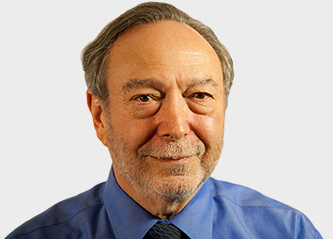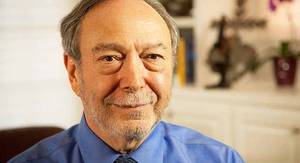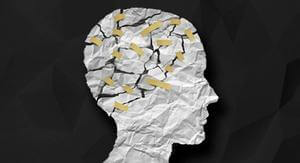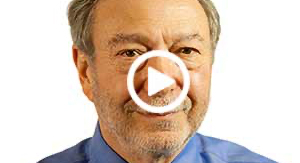NICABM Experts
Stephen Porges, PhD
Stephen Porges, PhD is the developer of the Polyvagal Theory – a way of understanding the nervous system that has revolutionized trauma treatment.
By working through the lens of Polyvagal Theory, practitioners can better help clients calm their bodies, manage their threat responses, and develop the capacity for self-regulation.
Stephen’s work has also been critical in helping ease the feelings of shame and self-blame that some clients feel toward their responses to traumatic experiences. In fact, Polyvagal Theory can be instrumental in helping paint trauma responses in a heroic light, rather than a shameful one.
As a researcher and professor, Stephen has published over 300 peer-reviewed articles and several books, including The Polyvagal Theory,[1] Polyvagal Safety,[2] and Clinical Applications of the Polyvagal Theory.[3]

CE/CME Accredited Online Training Courses
Check out a course featuring Stephen Porges, PhD:

Why the Vagal System Holds the Key to the Treatment of Trauma
2 CE/CME Credits Available

The Treating Trauma Master Series
10 CE/CME Credits Available

Working with the Pain of Abandonment
4.25 CE/CME Credits Available

How to Work With Shame
4 CE/CME Credits Available
What is Polyvagal Theory?
Polyvagal Theory is a theory that describes how the nervous system affects our emotional states, and vice versa.
The theory centers around the role of the vagus nerve, a cranial nerve that Stephen theorizes plays a role in emotional regulation, social connection, and threat detection.
But why exactly is the vagus nerve so central to these processes? Well, the vagus nerve is a primary component of the autonomic nervous system – which we know is responsible for regulating unconscious bodily functions, including those of the heart, lungs, and digestive tract.
Prior to the development of Polyvagal Theory, the human autonomic nervous system was seen in two parts – the sympathetic and parasympathetic systems.
But through his research on the vagus nerve, Stephen proposed that the parasympathetic nervous system is further divided into two additional parts – parts that correspond with the two branches of the vagus nerve:
- The dorsal vagal branch – Stephen argues that this branch was the first of the two in the vagal nerve to evolve. Accordingly, Polyvagal Theory sees this branch as associated with more primal survival strategies of primitive animals, like reptiles and amphibians.
- The ventral vagal branch – According to Stephen, this branch is the most recently evolved of the two and is therefore capable of more sophisticated threat-mitigation strategies.
So what does this mean for your clients? Well, Stephen argues that each of these branches plays a role in various defensive responses to threat or trauma.
What Polyvagal Theory Says About the Autonomic Nervous System
A key principle of Stephen’s Polyvagal Theory is that the three components of the autonomic nervous system follow an evolutionary hierarchy.
In order words, when faced with a threat, a person’s nervous system will respond in the following order, which is based on when each branch evolved:
- Social Engagement – This first circuit of the nervous system is unique to mammals and is only online when a person feels a relative sense of safety and control. If there is a manageable threat present, aspects of the social engagement system – like the face, vocalization, or language – will attempt to mitigate it. According to Polyvagal Theory, the social engagement system is a product of the ventral vagal branch of the parasympathetic nervous system.
- Sympathetic Mobilization – If the social engagement system is not capable of managing the threat, the sympathetic nervous system will kick in, priming the body for mobilization. This is where you might see clients react with fight or flight.
- Parasympathetic Immobilization – If fight or flight are not viable options to mitigate the threat, the nervous system will resort to its oldest and most primitive response: parasympathetic immobilization. This can involve the collapse/submit response, otherwise known as shutdown. Polyvagal Theory says that these defense strategies are regulated by the dorsal vagal branch of the parasympathetic nervous system.
According to Stephen, it’s also important to know that not all defense responses involve the activation of just one nervous system. Specifically, some of the defense responses that go beyond the fight-flight model – like freeze, attach/cry-for-help, and please and appease (or fawn) – are what Stephen calls hybrid states.
Now, to get a better picture of these three autonomic responses, consider this brief example . . .
Let’s say an experienced hiker encounters a wolf in the woods. Knowing what to do in this situation, the hiker is able to utilize their social engagement system and talk in low tones to soothe the wolf while slowly backing away.
Now let’s say an inexperienced hiker encounters a wolf and panics. In this case, the nervous system might activate sympathetic mobilization, sending the hiker sprinting in the opposite direction. Or, it could determine that the best course of action is to freeze, possibly tricking the wolf into moving on.
Finally, what if the hiker is attacked by the wolf? The nervous system might respond with collapse in attempt to save energy and protect vital organs. It could also respond by causing the hiker to dissociate in order to distance their mind from the pain that the body is experiencing.
Now, here’s the thing – even after this threat subsides, the hiker’s nervous system may still be stuck in a defensive response. That’s because according to Polyvagal Theory, trauma can leave an imprint on how the nervous system perceives the world.
How the Nervous System Detects Threats
Another key part of the Polyvagal Theory is a concept that Stephen has coined “neuroception.”
You’ll probably notice that the term is a combination of the words “neural” and “perception.” And in a very literal sense, that’s exactly what it means – the “perception” of the nervous system.
As Stephen puts it,
“I call this neuroception to emphasize that reactions to trauma are not a product of cognitive perception. It’s not our decision to make a trigger a trigger. But it’s our nervous system’s evaluation of some type of sensory information that changes our physiological state. It’s coming in below a level of interpretation and awareness.”
– Stephen Porges,PhD, How to Work with a Client’s Emotional Triggers
In the past, many have considered responses to trauma as something that happens in the cognitive, decision-making part of the brain.
But in the face of a traumatic event, there often isn’t time for the mind to think through the best course of action.
So with Polyvagal Theory, Stephen emphasizes that trauma responses are not voluntary choices – they’re reflexive, hard-wired responses that all humans exhibit. And because they’re instinctive, the body often remains in these defensive states even after a threat has passed, in order to anticipate future danger.
In Stephen’s words,
“If you start thinking more in both an evolutionary and a neural-physiological model, you start thinking about adaptive responses and the association of some of those adaptive responses with situations.”
– Stephen Porges,PhD, How to Work with Shame
This is where Polyvagal Theory can be key in helping mitigate feelings of shame that clients might experience after trauma.
How Polyvagal Theory Can Provide Psychoeducation to Clients
Taking a polyvagal-informed approach to trauma treatment can be a powerful way to help clients better understand their response to threats and manage their emotions after a traumatic event.
Say, for instance, a client and his friend were confronted by robbers when walking home one day from school.
In response to the threat, your client ran away and hid behind a bush. But their friend was surrounded by the attackers, who ended up stealing his wallet and seriously injuring him.
Your client may look back at this event and blame themselves for running away. They may think of themselves as a coward for not defending their friend.
But through the lens of Polyvagal Theory, your client can understand that their response to this threat was not a reflection of whether they are a good or bad person. Rather, their reaction was a split-second decision made by the nervous system, which has the sole goal of keeping us alive when danger arises.
Here’s another example from Stephen:
“The prototypical example is a woman who is raped, who doesn’t fight back. And the amount of shame and blame that gets incorporated into her personal narrative. And when many of them have read aspects of the polyvagal theory, their shame went away.”
– Stephen Porges,PhD, The Advanced Master Program on the Treatment of Trauma
Now because the cognitive mind alone can’t override these autonomic responses through sheer willpower, Stephen says we’re better off treating trauma with interventions that target the nervous system.
Applying Polyvagal Theory in Clinical Practice
Based on his research, Stephen has identified a number of polyvagal-informed clinical interventions that can help clients heal from trauma.
The main goal of Polyvagal therapies is to bring the social engagement system back online, so that your client can engage in the world and with others in a healthy, more functional way.
Stephen says practitioners can do this by:
- Removing cues of danger – This might look like reducing loud sounds or any sudden noises, but keep in mind that triggers will vary from client to client.
- Increasing cues of safety – The next step in this process is to create a sense of safety in your session. You might do this by giving clients the choice of where to sit in the room or by playing soft vocal music.[4] However, keep in mind that what may seem like a cue of safety to some might be interpreted as a threat by the nervous system in trauma survivors. For instance, imagine if your client was sexually groomed as a child. They may associate friendly smiles, an empathetic tone of voice, or the proximity of eye contact with impending danger. So according to Stephen, we want to be aware that our cues of safety aren’t too intrusive. Instead, he recommends that clinicians maintain a gentle, warm, and inviting presence, rather than overly positive facial expressions or body language.
- Co-regulate with your client – Once you’ve established a sense of safety for your client, you can then work on co-regulating with them. This involves stimulating the social engagement system so that you and your client can communicate via body language rather than just words – you might think of this as, “nervous system-to-nervous system communication.” As a clinician, your role is to provide constant, stable regulated energy, regardless of whether your client becomes dysregulated. Only through re-learning how to successfully co-regulate with another person can a client eventually learn to self-regulate on their own.
Polyvagal Theory can revolutionize our understanding of trauma and how we work with trauma survivors. That’s because by targeting the nervous system, we can better address the root cause behind a client’s emotional distress. And that can help us have better outcomes, more quickly.
References
- The Polyvagal Theory: Neurophysiological Foundations of Emotions, Attachment, Communication, and Self-regulation by Stephen Porges
- Polyvagal Safety: Attachment, Communication, Self-Regulation by Stephen Porges
- Clinical Applications of the Polyvagal Theory: The Emergence of Polyvagal-Informed Therapies by Stephen Porges
- The Safe and Sound Protocol: Integrated Listening Systems
Check out a course featuring Stephen Porges, PhD:

Why the Vagal System Holds the Key to the Treatment of Trauma
2 CE/CME Credits Available

The Treating Trauma Master Series
10 CE/CME Credits Available

Working with the Pain of Abandonment
4.25 CE/CME Credits Available

How to Work With Shame
4 CE/CME Credits Available
You can learn more about Stephen Porges, PhD and the Polyvagal Theory here:

The Body’s Adaptive Response to Trauma
He explains why that “shut down” may have been the most protective thing . . .

Polyvagal Theory in Action
When working with the body’s responses to traumatic triggers and stressful events . . .

Polyvagal Theory and How Trauma Impacts the Body
Can trauma haunt the body the same way it haunts memories?. . .

How to Work with Trauma without Triggering Fear
How to help patients heal is not always clear . . .